What Are the Side Effects of Topical Minoxidil for Hair Loss?
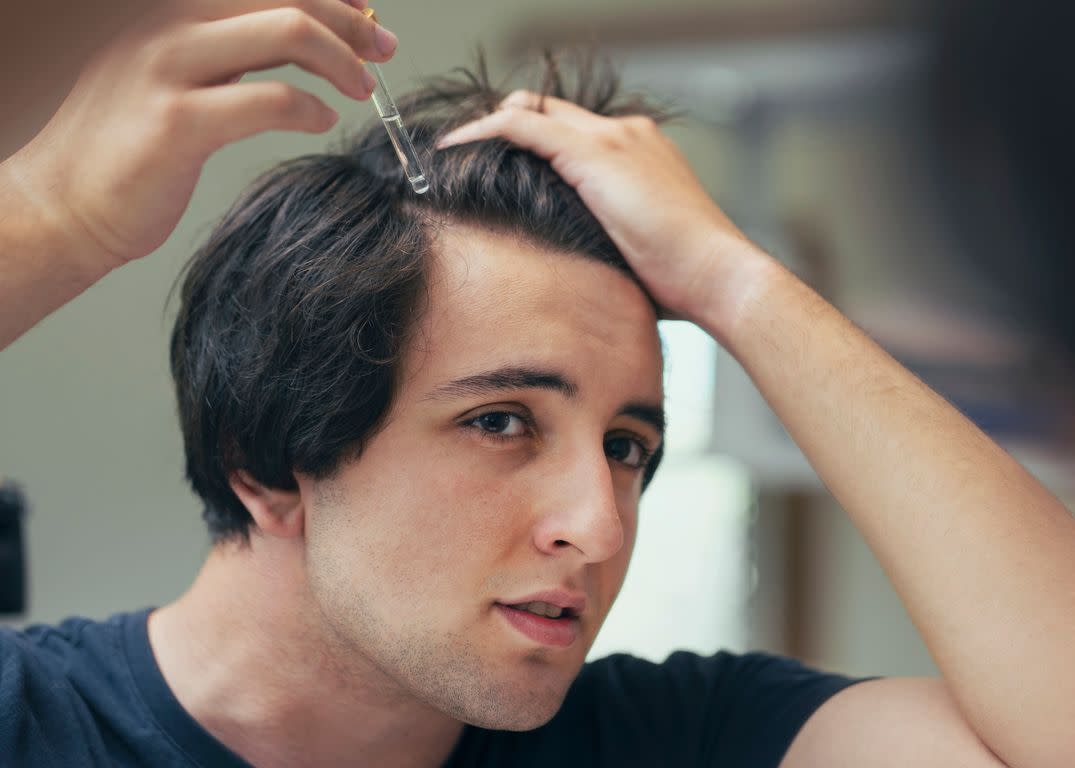
Minoxidil is one of the most widely used, FDA-approved hair loss treatments on the market. It’s used by millions of people all around the world to help fight against hair loss and stimulate new hair growth.
Minoxidil is available as a topical medication and as an oral medication. Most people affected by hair loss opt for the topical solution or foam versions of minoxidil, with oral minoxidil for hair loss still considered an “off-label” use.
Below, we’ve listed all of the known side effects of topical and oral minoxidil, as well as detailed information on how common side effects are from minoxidil use.
We’ve also explained what you can do if you develop side effects while using minoxidil to treat and prevent hair loss.
The Basics of Minoxidil
Minoxidil is a medication that’s used to stimulate hair growth. It’s available as a solution and as a topical foam. These versions of minoxidil are applied directly to areas of your scalp with hair loss, with most men applying them twice a day for optimal hair growth.
Oral minoxidil, on the other hand, is a vasodilator medication for hypertension that’s also used off-label to treat hair loss.
Unlike finasteride, another well-known hair loss treatment, topical minoxidil is available over the counter, meaning you can get it without a prescription.
This makes it an easy, convenient medication to add to your hair care routine if you suffer from a form of hair loss, such as androgenetic alopecia (male pattern baldness).
What Does Minoxidil Do?
Currently, research suggests that minoxidil treats hair loss and improves hair growth by moving your hair follicles into a state of active, ongoing growth, and by improving the supply of blood to your scalp.
Sound confusing? Understanding how minoxidil fits into the hair growth process is fairly simple once you're aware of how your hair actually grows.
Every single hair on your body, from your scalp to your facial and body hair, grows as part of a multi-phase cycle that’s referred to as the hair growth cycle.
During this cycle, each hair follicle passes through a growth phase called the anagen phase, in which hair grows to its full length over the course of several months or years.
This is followed by a transition phase that’s called the catagen phase and a resting phase that’s referred to as the telogen phase. During the telogen phase, hair stops growing and is eventually replaced by new hair that grows from the same follicle, causing it to shed.
Most forms of hair loss involve disruptions to this cycle. For example, male pattern baldness can develop when your follicles miniaturize due to the effects of dihydrotestosterone (DHT), resulting in a shorter anagen phase.
Telogen effluvium, on the other hand, can occur when some or all of your hair follicles enter into the telogen phase early, causing sudden hair shedding.
Minoxidil moves dormant hair follicles into the anagen phase, meaning they start growing rather than resting. It also extends the duration of the anagen phase, meaning your hair follicles spend more time growing before each hair sheds from your scalp.
As for stimulating blood flow, research suggests that minoxidil dilates blood vessels throughout your scalp. This can improve the supply of vitamins, minerals and other nutrients that your hair follicles need to build strong and healthy hair strands.
And the best part is, according to research, this stuff actually works.
For example, a 2004 study published in the Journal of the American Academy of Dermatology found that out of the 984 men studied in a year-long survey, 84 percent who used minoxidil for hair growth rated it as either very effective, effective or moderately effective.
What Are the Side Effects of Topical Minoxidil?
Because minoxidil is a widely used, thoroughly tested medication, its side effects are well known among healthcare providers and researchers.
Depending on the formulation, the most common topical minoxidil side effects are:
Skin irritation at the application site
Scalp itchiness
Slight burning sensation
Skin rash
These adverse effects can be from minoxidil itself or a skin reaction to some of the substances commonly used in minoxidil formulas.
Many minoxidil sprays and foams contain ingredients like propylene glycol and alcohol. These ingredients are usually included to help minoxidil dissolve properly and improve absorption into your skin.
If your skin is sensitive to propylene glycol, alcohol or both substances, you may notice irritation after applying minoxidil topically.
For most people, any skin irritation from minoxidil is mild and temporary. Talk to your healthcare provider if you experience any reactions while taking minoxidil.
Your healthcare provider can perform a patch test — a type of test used to determine what substance is irritating your skin — to see if you’re prone to allergic contact dermatitis from any of the ingredients in your minoxidil foam or topical solution.
If you’re allergic to a specific ingredient, your healthcare provider might suggest using a different formulation less likely to cause scalp conditions.
(Related: Finasteride & Minoxidil: The Most Effective Hair Loss Combo?)
Less Common Side Effects of Topical Minoxidil
In addition to the common side effects listed above, lesser-known minoxidil effects may include:
Temporary increased hair loss or hair shedding
Unwanted hair growth
Red bumps
Acne breakouts
Facial swelling
Headaches
If your hair looks slightly thinner than usual shortly after you begin treatment with minoxidil, don’t panic. Hair shedding often happens as minoxidil moves hair follicles into the anagen phase, and it’s a temporary issue.
Instead of worrying, it’s best to wait for three to four months to assess your hair growth, which is the normal amount of time that’s required to judge the efficacy of minoxidil.
Over time, you should notice that any temporary shedding from minoxidil slows down and fades away, with newer hairs filling in thin, low-density areas of your scalp.
Minoxidil may also cause unwanted hair growth, including on your body if it’s applied directly to a specific area. In fact, some people use minoxidil to stimulate beard growth to take advantage of this side effect.
To avoid unwanted body hair growth from minoxidil, carefully apply minoxidil liquid or foam only to your scalp. If minoxidil drips onto your face, neck or other body parts, carefully wash it away using soap and water.
Minoxidil Side Effects From Excessive Use
When used as directed, minoxidil is unlikely to cause significant issues. However, some topical minoxidil side effects may develop if you use minoxidil solution or foam excessively, such as by applying it more than two times per day or using too much of it on your scalp at once.
Potential side effects associated with excessive minoxidil use include:
Dizziness and/or lightheadedness
Swelling that affects your face, ankles, stomach or hands
Changes in your body weight, such as weight gain
Difficulty breathing when you’re lying down
Chest pain and/or a rapid heartbeat
In some cases, these symptoms may also develop if you use minoxidil normally. If you develop any of these adverse reactions after using minoxidil, contact a healthcare professional as soon as you can for further medical advice.
(Related: Does Topical Finasteride Work? What Should You Expect)
Oral Minoxidil Side Effects
Most people with hair loss use topical minoxidil solution or foam to prevent shedding and speed up hair regrowth. However, in some cases, your healthcare provider may suggest using the oral version of minoxidil.
Oral minoxidil is typically used to treat hypertension, or high blood pressure. Although it hasn’t been approved by the FDA to treat hair loss, it’s sometimes prescribed off-label at low doses to people who don’t notice improvements from topical minoxidil, or find it difficult to apply twice a day.
Like topical minoxidil, oral minoxidil can cause side effects. These include:
Hypertrichosis (excessive body hair growth)
Tachycardia (fast heart rate)
Transient dizziness
Fluid retention
Hair shedding
Heart issues
Headaches
Nausea
Vomiting
Skin rash
Acne
If you’re prescribed oral minoxidil to treat hair loss and develop side effects, it’s important to talk to your healthcare provider if you develop any side effects.
Is Minoxidil Safe?
Minoxidil is a safe, widely used medication, with numerous large-scale studies showing that side effects are uncommon.
For example, one review published in the Drug Design, Development and Therapy journal noted that minoxidil is generally considered an “effective and safe” treatment for hair loss.
A separate study, published in the Journal of the American Academy of Dermatology looked at the effects of topical minoxidil in men with pattern hair loss over a total treatment period of 48 weeks.
The researchers found that the medication was well tolerated without any evidence of systemic effects.
In short, research shows that minoxidil is safe and effective. Plus, it's also backed up by the fact that millions of men around the world use it on a daily basis to stop hair loss and stimulate new hair growth.
One last important note for the gents worried about how minoxidil might affect them between the sheets — minoxidil doesn’t cause sexual side effects, meaning you can use it without needing to worry about your sexual health and function.
Side Effects of Rogaine
Minoxidil is available as a generic medication and under the brand name Rogaine. Rogaine is sold in a variety of strengths to treat hair loss in both men and women.
Remember what we mentioned above about propylene glycol and alcohol? Well, that all applies here, too. Since minoxidil and brand name Rogaine are made with the same active ingredients, they can cause similar side effects.
As such, you’ll want to follow the same precautions as you would with generic topical minoxidil solution or foam with Rogaine to avoid experiencing any Rogaine side effects.
Minoxidil Drug Interactions
TV commercials for new drugs are notorious for ending with a seemingly endless list of potential interactions.
Minoxidil, at least in topical solution or foam form, is a pleasant exception. In fact, one benefit of topical minoxidil is that it isn't known to cause any drug interactions.
This means you can use minoxidil solution or minoxidil foam to treat a receding hairline or general hair loss with plenty of confidence in its safety, even if you’re currently prescribed other medications.
However, topical minoxidil is contraindicated in people who’ve experienced an allergic reaction to it at any period in the past. Those who have had an allergic reaction to topical minoxidil may not have a reaction to oral minoxidil, though, so they could consider discussing with a healthcare provider if oral minoxidil may be effective for them. Some clinicians also suggest monitoring your blood pressure levels and heart rate while using minoxidil, especially if you have any underlying medical conditions.
As always, even though minoxidil is sold over the counter without a prescription, to learn more about minoxidil interactions it’s best to talk with your healthcare provider before using it to ensure it’s right for you.
Minoxidil and Pets
Minoxidil is toxic to pets. In an article published in the Journal of the American Animal Hospital Association, researchers found that 56 percent of dogs and 59.7 percent of cats experienced a moderate or major illness after exposure to topical minoxidil.
The most common causes of exposure were coming into contact with a person’s skin after they applied minoxidil for cats, or discovering minoxidil in the trash or through other exploratory behavior for dogs.
Because of minoxidil’s safety risks for pets, this isn’t a medication that shouldn't be left hanging around for Mittens to knock off the bathroom sink.
If you have a pet, it’s important to take a few precautions when using minoxidil:
Keep your pet out of the room where you store minoxidil, especially when you apply it to your scalp. If you apply minoxidil in the bathroom, close the door and make sure to wash your hands thoroughly before you touch your pet.
Store minoxidil in a location your pet won’t find. Make sure not to leave your minoxidil on the countertop or your bedside table if you have a pet. Instead, store it safely inside a drawer your pet can’t get its paws into.
If your clothes or pillowcases are exposed to minoxidil, wash them. Make sure not to let your pets come in contact with sheets, pillowcases, or clothing that has been exposed to minoxidil without washing it thoroughly first.
Should You Take Finasteride When Using Minoxidil?
Finasteride is another FDA-approved hair loss treatment sold under the brand name Propecia.
Unlike minoxidil, finasteride works by stopping your body from converting testosterone to DHT, which is believed to be the primary androgen responsible for male pattern baldness.
DHT can attach to receptors inside your scalp and damage your hair follicles, gradually reducing your average hair diameter and contributing to male pattern baldness.
Our guide to DHT and male pattern hair loss goes into greater detail about the effects of DHT on your hair follicles, as well as how medications like finasteride prevent DHT-related damage.
In a study published in the journal Dermatologic Therapy, researchers found that finasteride and minoxidil were more likely to produce hair-related improvements when they were used together than when either medication was used on its own.
In the 428-person study, 59 percent of men with pattern hair loss who used minoxidil on its own and 80.5 percent of men who used finasteride showed improvements after 12 months.
In comparison, 94.1 percent of men who used both medications showed improvements after 12 months.
If you currently use minoxidil, adding finasteride to your hair loss prevention routine could result in a bigger reduction in hair loss and a better hair regrowth rate. But if you're curious about side effects such as acne, this guide will save you the trouble of searching, "finasteride minoxidil acne".
How to Use Minoxidil Properly
Minoxidil is a simple medication to apply — a topic we’ve covered in great detail in our guide to applying minoxidil for hair growth. We’ve included the short and sweet version of how to get the best result while using minoxidil below.
If you use a minoxidil topical solution, follow these steps:
Make sure that your hair is completely dry.
Fill the dropper with 1mL of minoxidil solution.
Apply the minoxidil to the affected areas of your scalp.
Using your fingers, gently massage the minoxidil solution into your scalp.
Wash your hands thoroughly using soap and warm water.
If you use minoxidil foam, follow these steps:
Make sure your hair is completely dry.
Dispense half a cap’s worth of foam onto your fingers.
Massage the foam into areas of your scalp with noticeable hair loss.
After you finish, wash your hands thoroughly with soap and warm water.
After you’ve applied minoxidil solution or foam to your scalp, allow at least four hours to pass so that the medication can dry before you cover or wash your hair.
Minoxidil can stain clothing or linen, so wash your hands thoroughly after applying the solution or foam to your scalp. Do not let your scalp touch any kind of fabric before minoxidil has dried properly.
The Bottom Line on the Side Effects of Minoxidil
Minoxidil is generally a safe and effective medication — one of many reasons it’s available over the counter, without any need for a prescription.
Because it’s available over the counter, topical minoxidil is a great first choice if you’re starting to notice the early signs of male pattern baldness and want to take action.
However, like all medications, minoxidil can still cause adverse effects. As such, it’s important to keep the following in mind when you’re using minoxidil to treat hair loss:
Most side effects of minoxidil are mild. Serious side effects from minoxidil aren’t very common. When side effects do occur, they tend to be issues like itching, irritated skin or redness.
Minoxidil doesn’t cause sexual side effects. Minoxidil has no known effects on your sex hormone levels, nor is it linked to issues like reduced sex drive, erectile dysfunction (ED) or premature ejaculation (PE).
Side effects from topical and oral minoxidil can differ. When taken orally, minoxidil may cause side effects such as fluid retention, elevated heart rate and increased body hair growth.
If you develop side effects while using minoxidil, it’s important to talk with your healthcare provider. They may suggest making certain changes to the way you use minoxidil, switching to a different minoxidil formulation or trying another hair loss medication.
This article originally appeared on Hims.com and was syndicated by MediaFeed.org.
More from MediaFeed:
Weight Loss Medications: Are They Actually Effective?
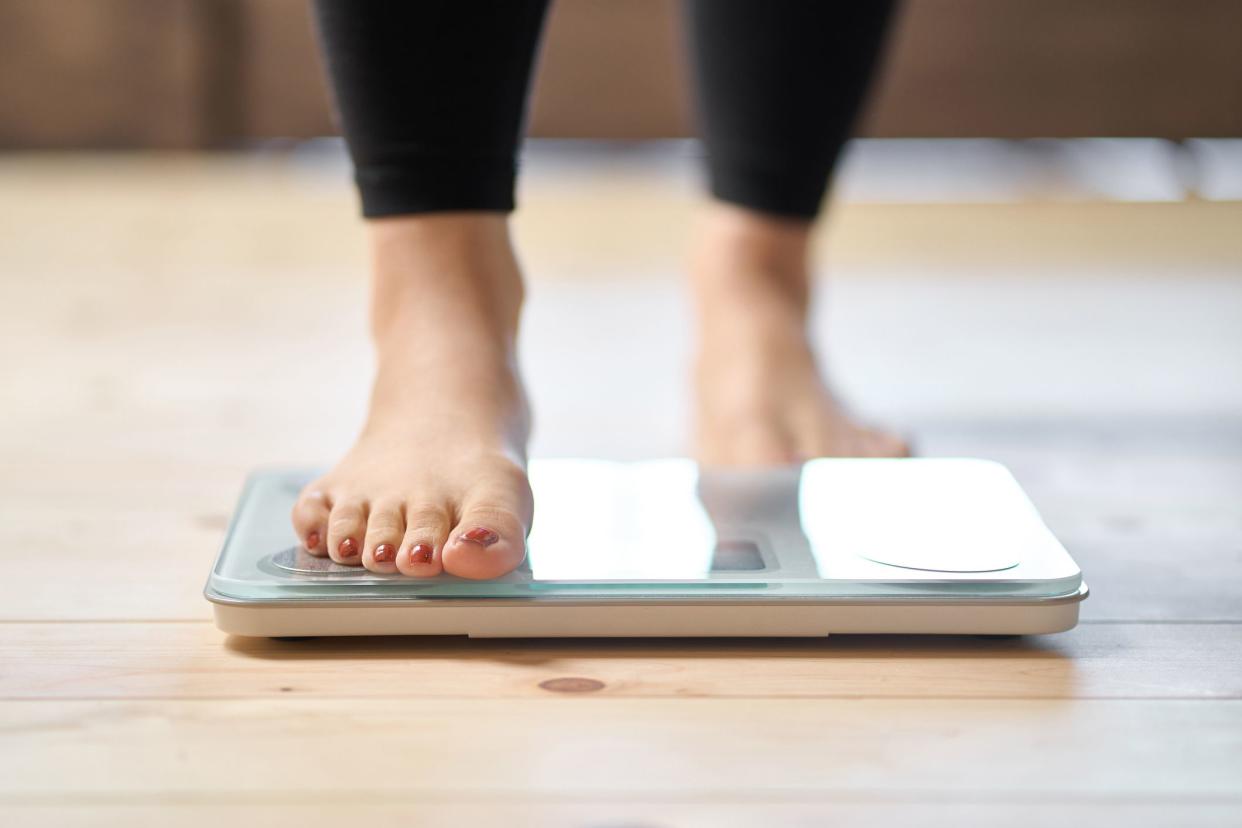
It’s common knowledge that managing your weight keeps you healthy now and as you get older. In fact, obesity contributes to several health conditions, including heart disease, stroke, type 2 diabetes and certain types of cancer.
Not only was the prevalence of obesity in U.S. adults nearly 42 percent in 2017, but the estimated medical costs for adults with obesity were almost $2,000 more each year than for adults who do not have obesity .
Those who have a body mass index (BMI, or the measurement of fat based on height and weight) between 25 and 30 are considered overweight, while those with a BMI over 30 are considered to have obesity.
You’ve probably heard of a few weight loss medications, or at least their brand names, like Ozempic® and Wegovy®. However, there are several other prescription drugs available that are approved by the U.S. Food and Drug Administration (FDA) and frequently prescribed off-label for weight loss.
Healthcare providers may prescribe these medications to someone who has obesity or is overweight with a weight-related health problem like high blood pressure, high cholesterol or diabetes.
mapo/istockphoto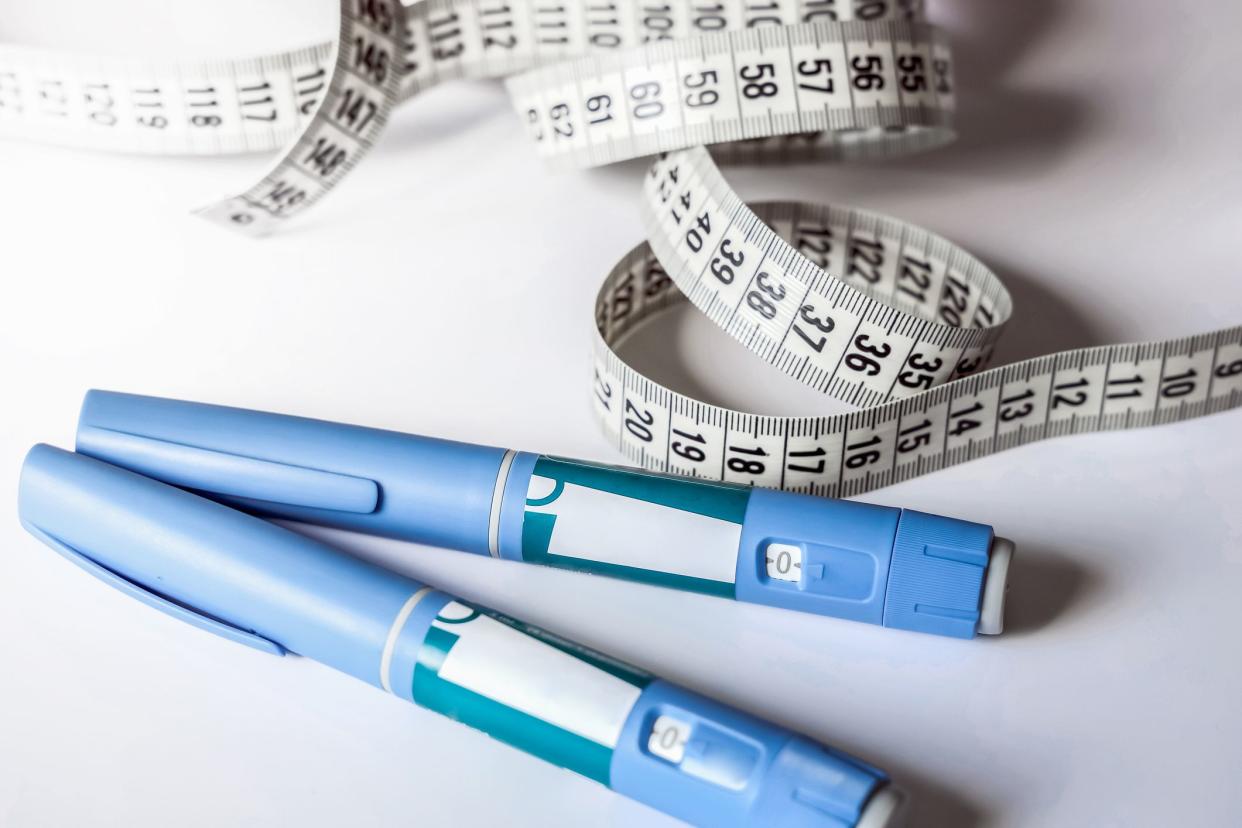
You’re probably familiar with one of semaglutide’s brand names, Ozempic — other brand names for this drug include Wegovy and Rybelsus®.
Ozempic is approved by the FDA to treat type 2 diabetes and may be prescribed off-label for weight loss, in combination with lifestyle changes like diet and exercise or with other diabetes medications like insulin or metformin.
Wegovy, meanwhile, is a prescription medication approved for use for weight loss in people who have obesity or who are overweight.
Ozempic and Wegovy are in a class of medication called GLP-1 receptor agonists, which mimic the hormone glucagon-like peptide-1 and target areas of the brain that regulate appetite.
Ozempic was approved by the FDA in 2017, while Wegovy was granted approval to pharmaceutical company Novo Nordisk more recently, in 2021.
CR/istockphoto
Although only approved by the FDA to treat diabetes, metformin is often used off-label for weight loss, as well as gestational diabetes (a type of diabetes that develops during pregnancy) and polycystic ovary syndrome (PCOS).
It isn’t exactly clear how metformin helps people lose weight, but researchers think the drug works as an appetite suppressant. Similarly to Ozempic, metformin may increase how much GLP-1 hormone your body makes. This can send a signal to your brain that you’re full, which means you eat fewer calories.
Read our blog to learn about Ozempic vs. Metformin for weight loss.
(Related: Metformin For Weight Loss: Does It Work?)

If you’ve dealt with depression or looked into medication to quit smoking, bupropion may sound familiar to you.
For weight loss, it can be combined with the drug naltrexone, which is used to treat alcohol and drug dependence, to curb your hunger or make you feel fuller sooner. Together, these medications work on two areas of the brain, the hunger center and the reward system, to reduce appetite and help control cravings.
Along with a reduced calorie diet and exercise plan, naltrexone-bupropion can also help keep excess weight off.
Prostock-Studio/istockphoto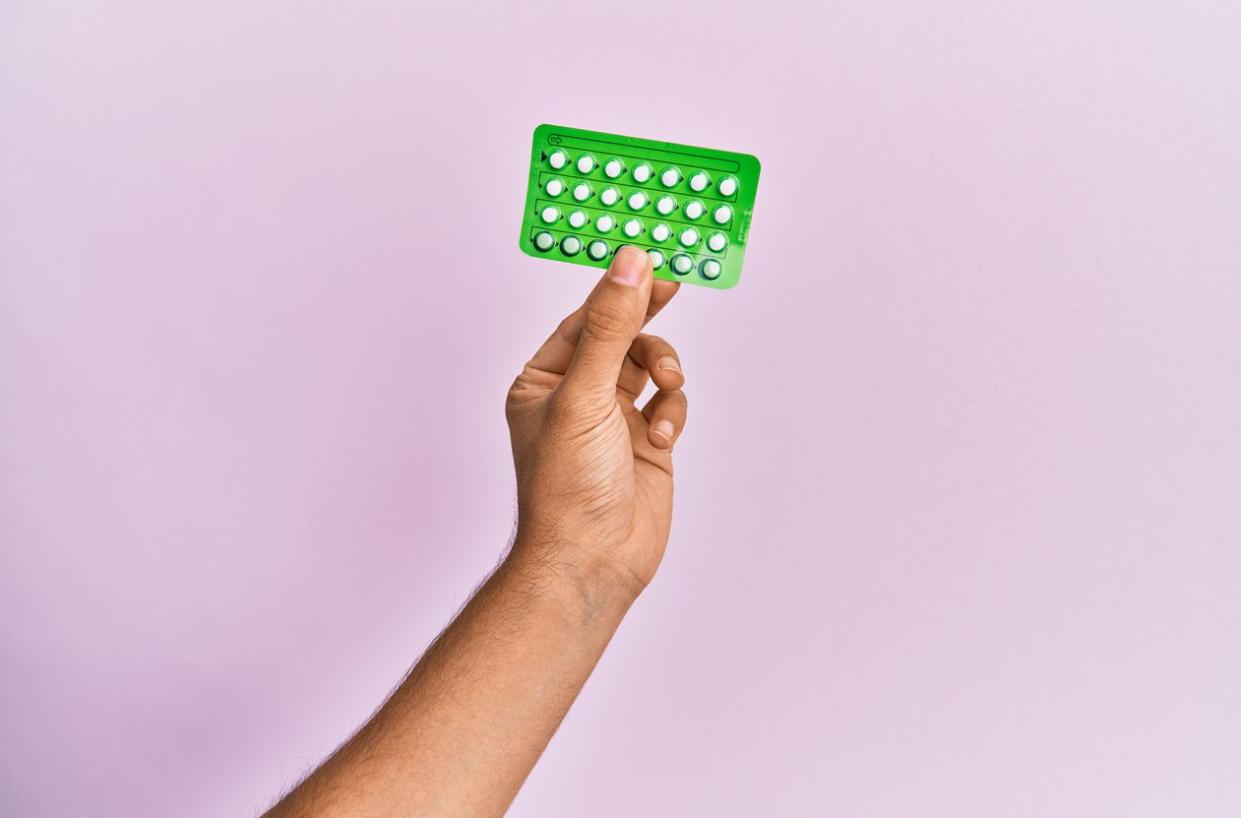
Phentermine-topiramate is actually two separate medications that are combined in Qsymia, but are offered separately in other applications.
While phentermine is considered an anorectic and topiramate is an anticonvulsant, both help with appetite suppression.
Topiramate offers the added benefit of helping you feel fuller longer after you eat.
When used specifically with a healthy exercise regimen and a reduced calorie diet, these medications — either together or separately — have been shown to help people lose weight and keep it off.
AaronAmat/istockphoto
Orlistat, which belongs to a class of medications known as lipase inhibitors, reduces the amount of fat your body absorbs from the food you eat.
Orlistat is used for weight loss in conjunction with exercise and a reduced-calorie diet, as well as after weight loss to help people keep from gaining back that weight.
While the brand name Xenical requires a prescription, another brand called Alli is available in a lower dosage without one.
smartstock/istockphoto
Like Ozempic and Wegovy, liraglutide is an injected weight loss medication. It works as a GLP-1 receptor agonist to suppress appetite, similarly to semaglutide.
Also available under the brand name Victoza at a lower dose, this drug is FDA-approved to treat type 2 diabetes.
(Related: Weight Loss Injections: Are They Safe?)
JNemchinova/istockphoto
These weight loss drugs are all available with a prescription from a healthcare professional, but how effective are they really?
One study found that when people without diabetes took a weekly semaglutide injection they had a higher average weight loss — almost a 15 percent average decrease in weight — than people who took a placebo.
Metformin has also demonstrated clinically significant weight loss. A 2020 meta-analysis of 21 trials testing metformin found the drug had a modest impact on lowering BMI, especially for those who are considered to have obesity.
A smaller study on metformin also found that the average amount of weight lost in 154 patients was between 5.6 and 7 kgs (that’s roughly between 13 and 15 pounds).
It’s also worth mentioning cost here — if you can’t afford the drug you need to take, it’s effectiveness essentially drops to zero percent. That said, there’s some wide price disparity between weight loss drugs.
For instance, injectibals like Ozempic and Wegovy are generally more expensive than orals like metformin — namely because metformin is a generic medication that’s been around for decades, and Ozempic and Wegovy are newer.
Liudmila Chernetska/istockphoto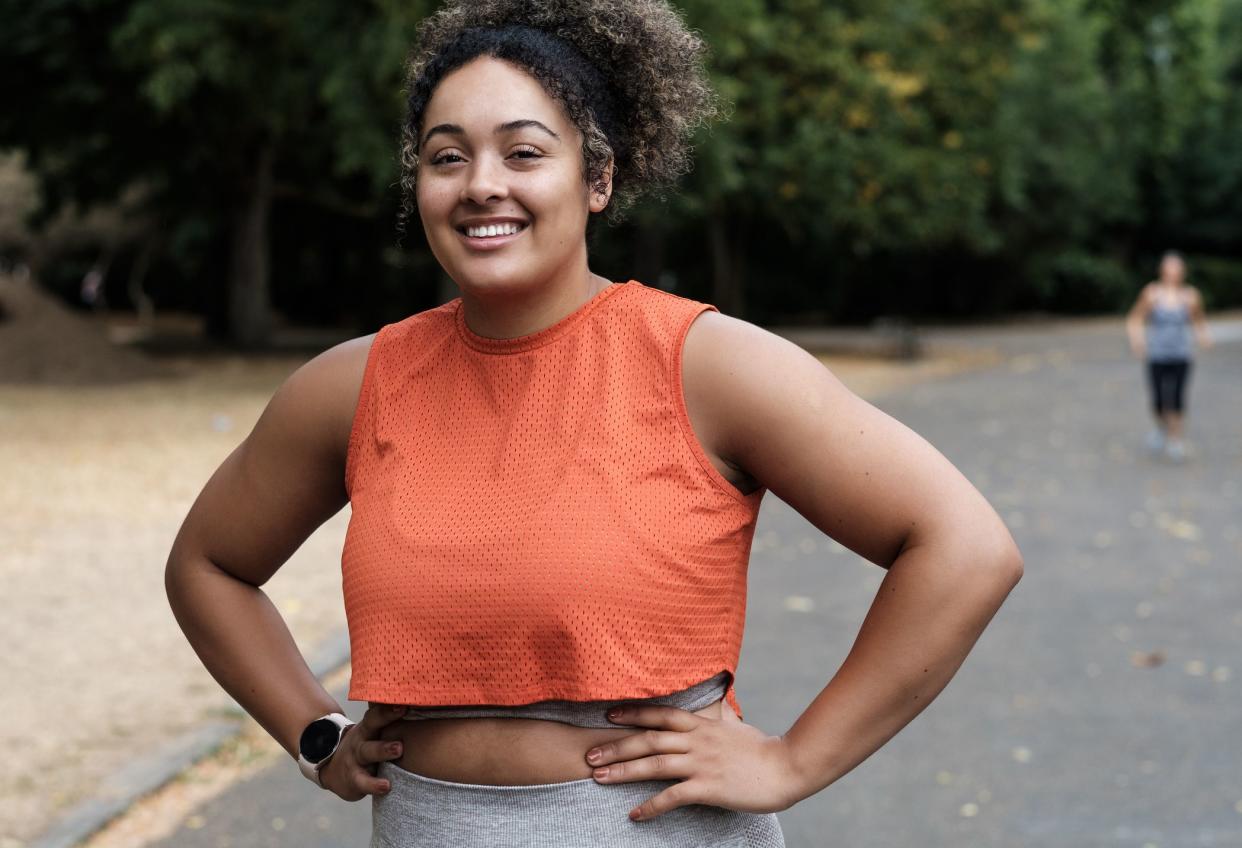
Because everyone’s weight loss journey is different, weight loss medications may work slowly for some people and faster for others.
How long you need to take a weight loss prescription drug depends on various factors such as what side effects you experience, how much weight you need to lose, whether the drug helps keep the weight off and more.
Generally, as found in the studies noted above and clinical trials, weight loss will occur within the first few months of using the medication.
Sometimes your health care professional may recommend long-term use of the medication, while other people may be advised to stop the drug if they don’t lose a certain amount of weight after 12 weeks.
If you’re taking a weight loss medication, your healthcare provider will likely suggest that you also increase your physical activity and make healthy lifestyle changes like eating lots of protein and fiber and getting enough sleep. These medications are the most effective when combined with healthy habits.
Jorge Elizaquibel/istockphoto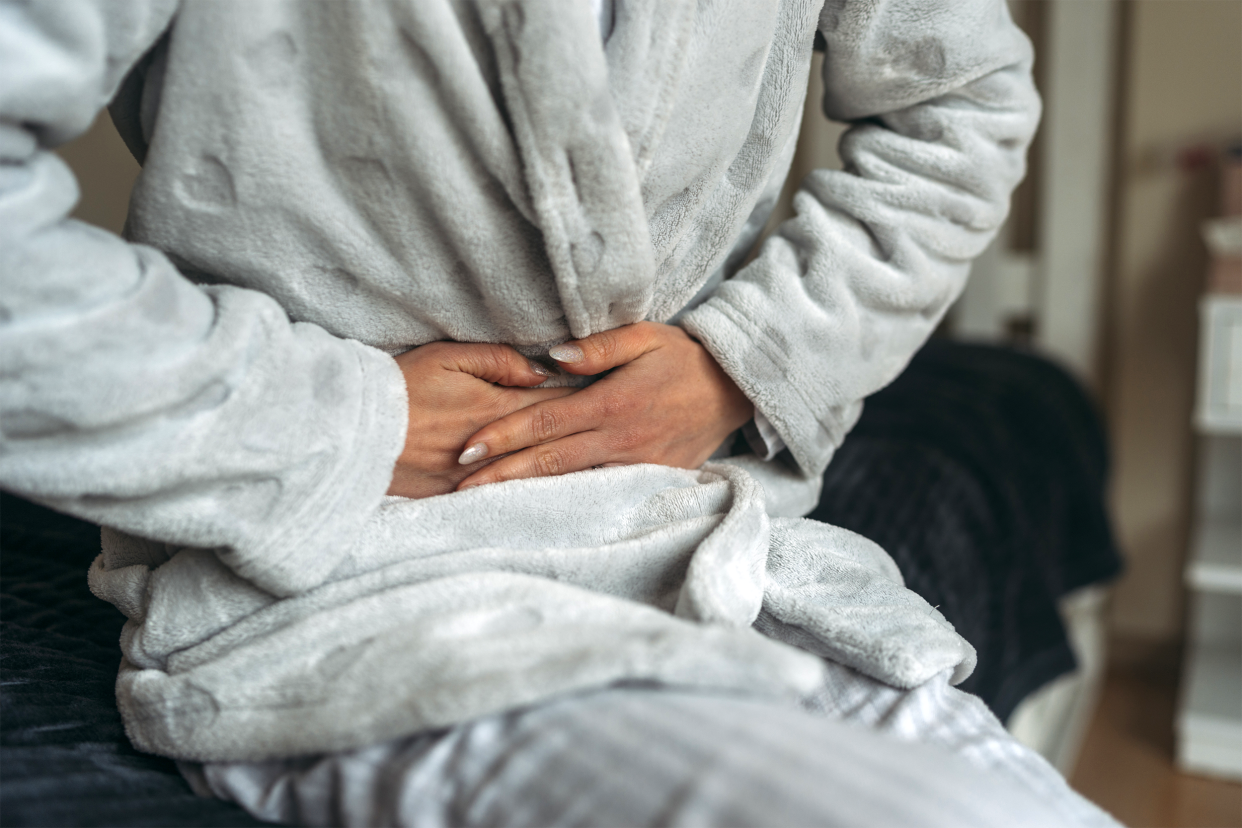
Just like any medication, weight loss drugs also come with the possibility of side effects.
When it comes to injectibal drugs like Ozempic and Wegovy, there are some broad side effects that apply to all injectibals — like swelling, redness or other discomfort at the injection site — but generally, the side effects profiles of these drugs are similar regardless of delivery method.
The most common side effects of many of these weight loss medications include:
Stomach pain or constipation
Diarrhea
Nausea
Vomiting
Some, like liraglutide and naltrexone-bupropion, may cause an increased heart rate or headaches.
Liraglutide and semaglutide may also increase the risk of pancreatitis (swelling of the pancreas). You may also have a higher risk of developing tumors or thyroid cancer when using liraglutide or semaglutide, although these serious side effects are very rare.
hsyncoban/istockphoto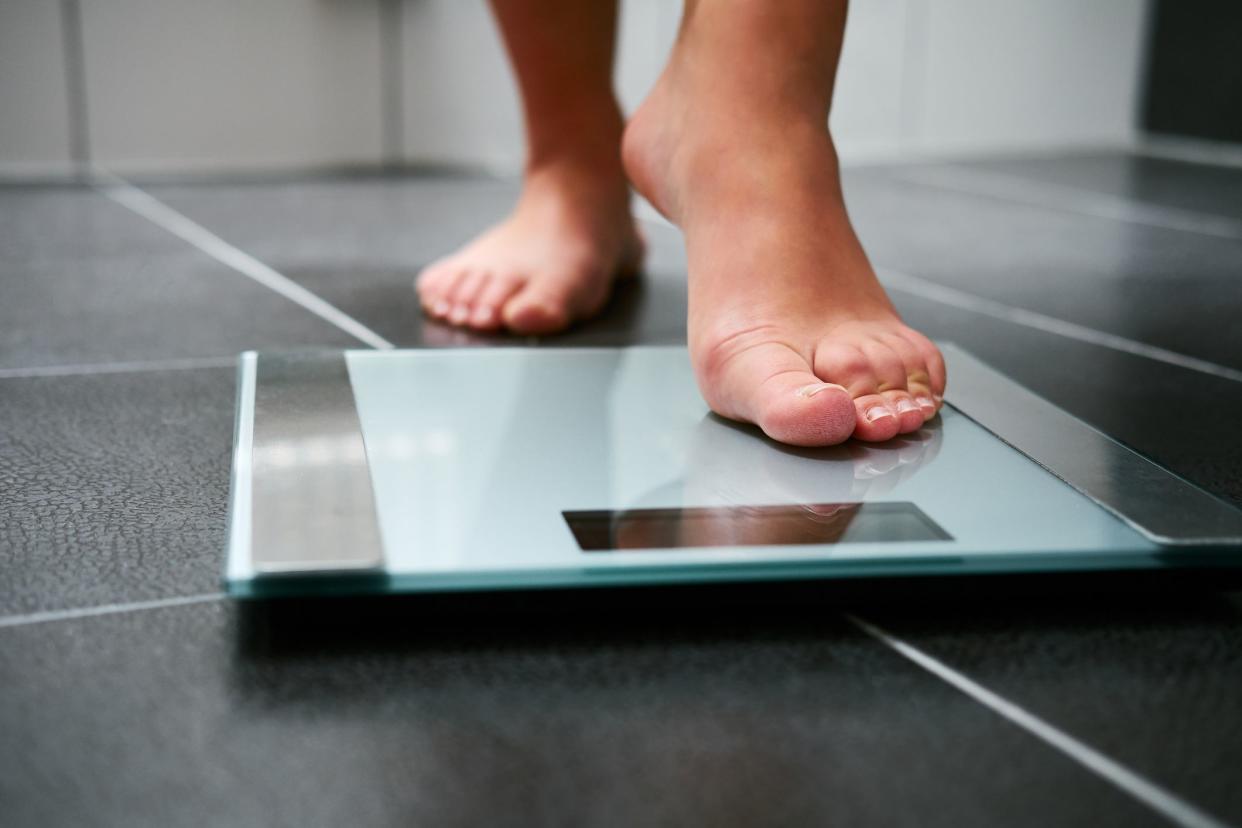
There’s a good chance you’ve heard of weight loss medications like Ozempic or even Wegovy, but there’s also a good chance that the headlines and celebrity-focused articles didn’t answer all your questions. Here’s what you need to know about whether they’re effective.
There are several FDA-approved weight loss drugs, including semaglutide, orlistat, phentermine-topiramate, naltrexone-bupropion and liraglutide. Metformin is another common medication used off-label for weight management.
These drugs all work slightly differently, but many decrease your appetite and help you stick to a lower-calorie diet. Healthcare providers often recommend they be used alongside regular exercise and healthy habits to maximize sustained weight loss.
However, there are side effects such as nausea, vomiting, diarrhea and constipation and, for the injectibals, injection-side irritation, injury or discomfort. Often, these are mild and serious side effects rarely happen.
Cost is also worth considering. Injectibals like Ozempic and Wegovy can generally cost anywhere from $800 to $1,000 per prescription, where a generic like metformin can be had for a fraction of that — usually for under $100 a month.
There’s no one “best weight loss medication” — there’s only what’s best for your particular needs. If you’re curious about medication for weight loss, you can talk to your healthcare provider for medical advice and to explore your options. And if you’re interested in other weight loss treatments online, we can help.
This article originally appeared on Forhers.com and was syndicated by MediaFeed.org.
Rostislav_Sedlacek/istockphoto
